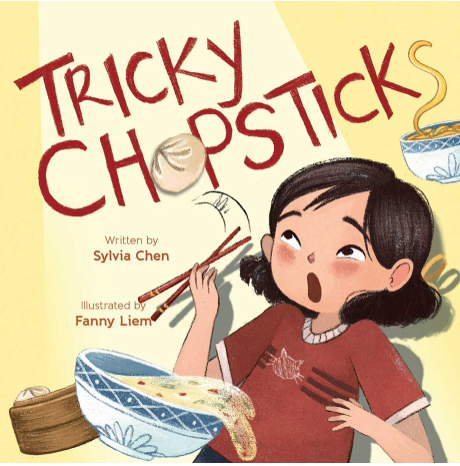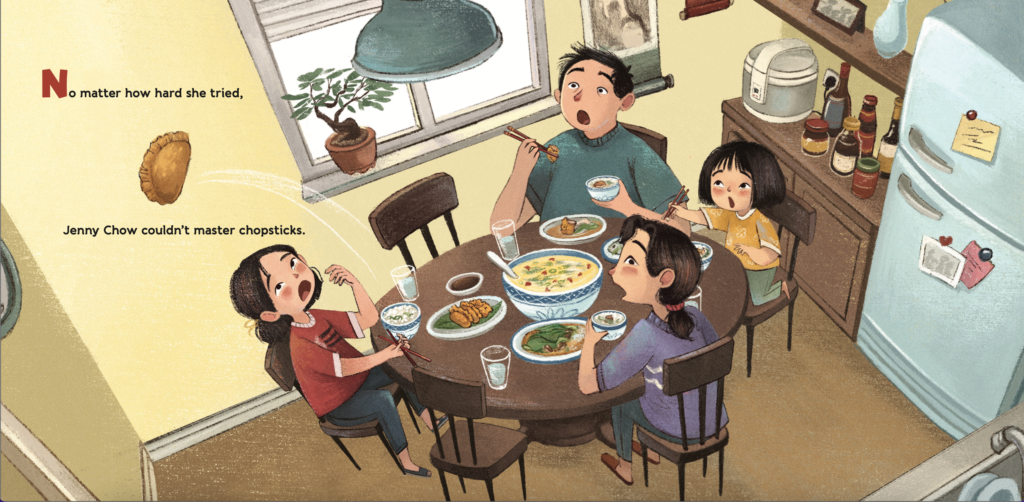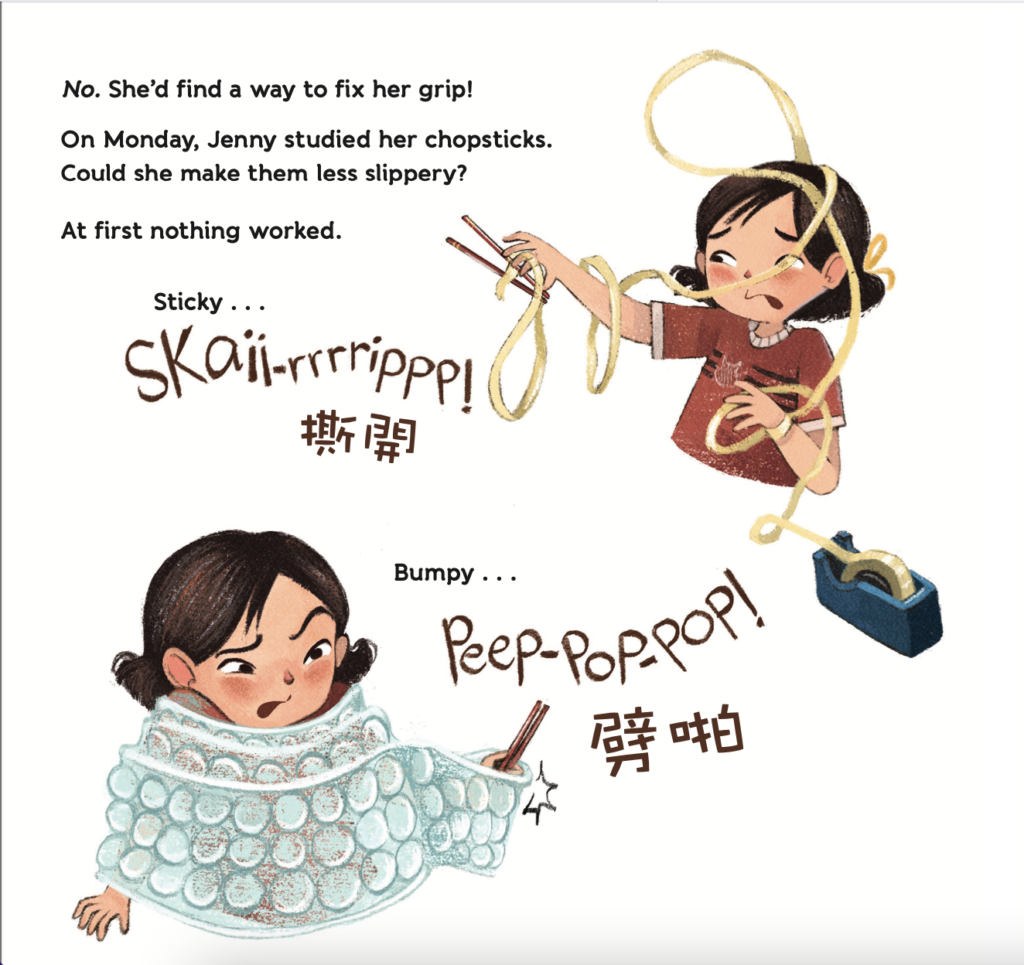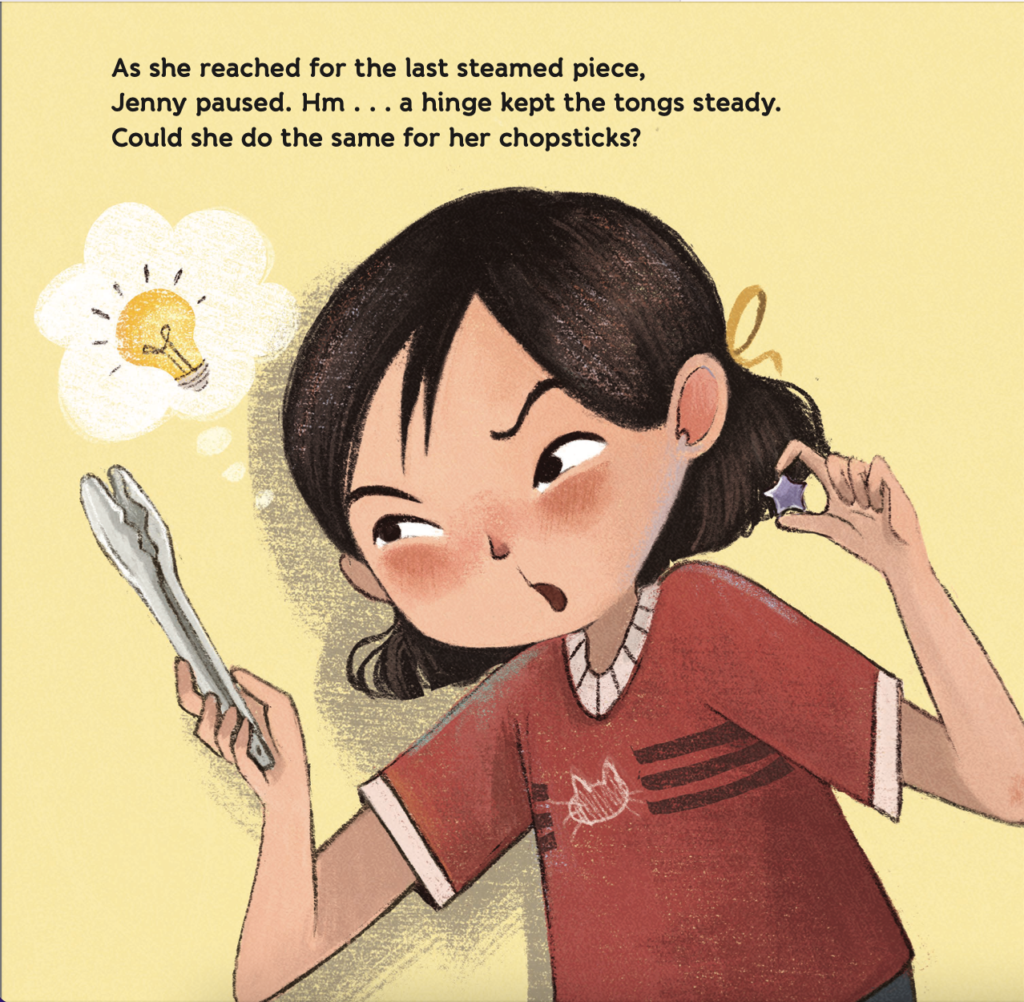As soon as I heard the premise of Tricky Chopsticks by Sylvia Chen and Fanny Liem, I immediately added it to my school library wishlist. Following the story of Jenny Chow, who must come up with a solution for her chopstick troubles in order to succeed at the family Chopsticks “Chow-llenge,” this picture book has so many hooks I knew it justified a space on our overstuffed shelves. Below are four ways I suggest using Tricky Chopsticks with students.

Read Aloud: While I could read any picture book aloud, when I am choosing something for story time in the library, there are certain things I consider. After all, that fifteen-minute chunk of time is not just me flipping pages and saying words out loud—it’s an interactive performance. So is there a pleasing rhythm, juicy words, and language that is playful, beautiful, or both? Are there places we can stop to predict, wonder, and discuss? Will the visuals be appealing, even to the kids in the back row? Can we extend the story after reading with hands-on activities or new research? Check, check, check, check! The punchy onomatopoeia and well-placed alliteration and assonance beg for an audience. There is plenty to unpack with kids about character and plot, from how Jenny is feeling to what solutions she will come up with, and if any will actually work. Fanny Liem’s bright digital illustrations, with all the vibes of a favorite cartoon, are sure to appeal. And look no further than the back matter to find ways to extend student learning. Or look further, because I have ideas!

Mentor Text: On a craft level, one way Tricky Chopsticks stands out is for its incredibly effective use of onomatopoeia. When you want to take kids’ “bangs” and “pows” to the next level, show them what Sylvia Chen has done here. As Jenny clumsily maneuvers her chopsticks, the “splat-choo” and “kuh-punng” of flying, splattering food delight the reader with unusual, yet perfectly fitting sounds. Even better—the onomatopoeic words are written in both English and Chinese, something multilingual students may want to try. This craft move appears in three key scenes: when Jenny’s troubles are first introduced, when she tries and fails a variety of ways to redesign the chopsticks, and at her lowest point, when it seems that even after all of her hard work, she will never master the utensil. Analyzing this with students illustrates how onomatopoeia can be used to heighten emotion and drama.

STEM Learning: Jenny Chow experiments with a variety of methods to make chopsticks less wobbly, slippery, and tricky, making this book an excellent springboard for engineering challenges. Jenny’s ultimate solution, inspired by the mechanism of a hinge, is outlined in the back matter with detailed instructions. But students could also be provided with a variety of materials and plenty of planning paper to design their own solutions to solve Jenny’s problem.

Social Studies Connections: Tricky Chopsticks can enhance any social studies unit with topics of customs, culture, and family traditions. Does your school celebrate Lunar New Year (mine does!) or host an International Day or Family Culture Night? Tricky Chopsticks is a great read aloud in the lead up to those types of special events. And with AAPI month around the corner, this is also a perfect book to highlight in May.
Congratulations Angie Quantrell for winning a copy of Awe-Samosas by Marzieh Abbas and Bhagya Madanasinghe! Thank you Marzieh for arranging this giveaway!

Can’t wait to read this book. I’ve been seeing it on Twitter (X) and Facebook. The illustrations make me want to read it. Having trouble mastering the chopsticks myself, I can relate to Jenny!
Wonderful turnaround of a child of Asian descent learning chop sticks! I taught in China for a month and finally used them efficiently if not very attractively!
So fun to read about how you might use this delightful book with children. Those lucky students!
Thank you, Sara. What a delightful book with layers! I used to practice picking up single grains of rice with my chopsticks 🙂
Thank you so very much for such a wonderful guide on using Tricky Chopsticks in the classroom, Sara!!
Sylvia, this looks like such a fun book! Can’t wait to read it! Congratulations!
(And thanks for Awe-Samosas! I LOVE picture books – about food! Well, nearly any topic. LOL)
This book makes me smile!…It took me a long time to master the use of chopsticks.
This book makes me smile. I had a heck of a time learning to use chopsticks, but I’m glad I did!